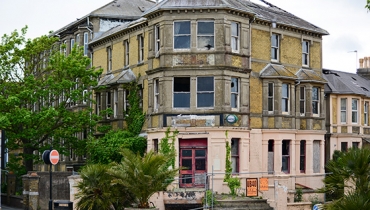Bill Gertos, a Sydney based property developer and former accountant has been successful in litigating to become the legal owner of a $1.7 million Sydney home that he moved into after the death of the true owner.
The house located at 6 Malleny Street in Ashbury was originally owned by Mr Henry Downie, who occupied the house from 1927 until he died in 1947. During this time, Mrs Grimes also lived in the home as a tenant and paid a small amount of rent to an agent each week. Mr Downie left no will and after his death Mrs Grimes remained living in the Ashbury home until she died in 1998.
In 1998, Mr Gertos noticed that the house in Ashbury appeared to be unoccupied which sparked his curiosity. He made a few inquiries and found out that the tenant, Mrs Grimes had recently died.
Shortly thereafter, Mr Gertos visited the property in hope of finding some more answers where he found the house was in an inhabitable condition. After finding the home practically falling apart and abandoned he decided to “take possession” of the land and began conduction repair works on the property.
After changing the locks, Mr Gertos spent $35k towards renovating the property to increase its liveability, including plumbing work and other repair works. He continued to pay the bills of the property including water levies and in 2014, he spent a further $104k towards further renovations of the property.
Mr Gertos went to obtain legal advice, where he was notified that if he occupied the property for more than 12 years and made contributions to the upkeep of the property, he could claim to be the legal owner of the property under the principle of adverse possession.
Adverse possession, sometimes known as squatting rights, is a principle which allows a person to claim a legal interest in that property if they meet certain requirements This principle arises from NSW law which demonstrates that occupying a parcel of land will be enough evidence to claim ownership over property.
In NSW, pursuant to section 45D of the Real Property Act you must meet certain requirements to be successful in adversely possessing a property:
- The property must be possessed by the same owner. For example, Mr Gertos was the only person possessing the Ashburn home during the 20 years of possession.
- The true owner of the property must not give permission to the adverse possessor otherwise you cannot claim adverse possession. In simple terms, Mr Gertos did not inquire to the family of Mr Downie to possess the property.
- The adverse possessor must act openly in their possession and must not keep it a secret.
- Finally, the land must be adversely possessed for more than 12 years to begin the process of becoming the legal owner of the property.
Mr Gertos commenced proceedings in the NSW Supreme Court against the true owners’ children where they argued that he did not possess the property in an “open matter”. The judge held that he “did not think that” Mr Gertos’ possession of the property was secretive as “he acted like a landlord by entering into leases and maintaining and preparing the property”.
His Honour went on to say that “neighbours and other residents in Malleny Street may not have seen Mr Gertos personally, or had any dealings with him, but that is no different from what commonly occurs where a residential property is held by its owner as an investment and is made available for lease”.
20 years later, The NSW Supreme Court ruled in favour of Mr Gertos and he was successful in his claim to become the legal owner of the land, adding an additional $1.7 million into his asset pool.
